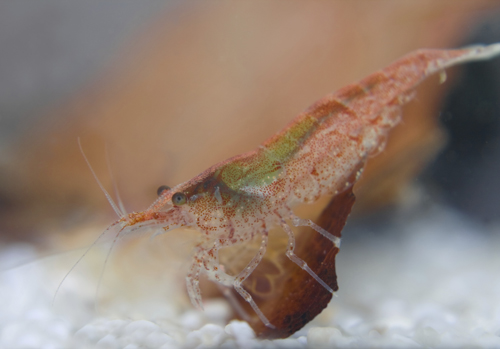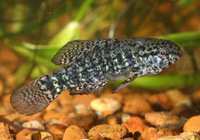
Q. My wife and I recently set up a 200-gallon South American habitat aquarium I can think of no fish more exciting to stock it with than the largest fish of them all, the arapaima. What can we do to care for this incredible animal?
Zach Fisher
Oregon
A. As you stated, the Arapaima gigas is the largest growing freshwater fish in the world. Hailing from the tropical waters of South America, these fish have been reported as getting as large as 9½ feet and weighing in at more than 400 pounds. As you can imagine, these animals are tremendous. The fact that much of their natural diet consists of small birds and mammals tells us a lot about these impressive prehistoric-looking fish. Fossilized arapaima have been found, leading scientists to believe that they were swimming Earth’s waters long before humans arrived. In addition to their impressive size and incredible appetite, the arapaima can breathe atmospheric air from the water’s surface using a special lunglike organ in the throat. This adaptation allows the fish to survive periods of drought in the Amazon and survive in waters with low oxygen content.
Considering all of these impressive feats, the arapaima (and several other too-large fish offered in the trade) is not suited or adapted for life in the home aquarium. It shocks me whenever I hear of or see an arapaima for sale, because one specimen would require an aquarium that is several thousand gallons in size at least. While 200 gallons seems like a large aquarium, and is by many standards, it simply isn’t near what is needed to keep one of these impressive fish.
In addition to consuming large amounts of fish food (something that would create a great expense in time), the arapaima grows very fast. I have heard public aquarium workers comment that they would come to work in the morning only to gaze at the arapaima in disbelief as it appeared the fish had grown inches in size overnight. While I question whether these animals grow that fast, there is no doubt that they would not be able to turn around in the aquarium you described.
Another thing that must be considered when housing a fish that can weigh more than 400 pounds is the fact that with brute force alone the fish could shatter the side panels of the aquarium glass. While this may sound unlikely, I have heard from other aquarists who had fish smaller than the arapaima, that their fish used its own strength to damage the aquarium.
Overall, an arapaima just isn’t practical in any home aquarium. There are several species of arowana and bichir that grow large and look unique and prehistoric. These fish are far more suited to aquarium life and have many success stories detailing their high survival rate. Your aquarium would be more than large enough for these species and in the end I think you would be more pleased keeping an animal suited for your aquarium than one that would become excessively expensive and potentially damaging.
 Fish Aquarium Setup Decorations
Few things are as captivating as a beautifully decorated aqu
Fish Aquarium Setup Decorations
Few things are as captivating as a beautifully decorated aqu
 Setting Up a Freshwater Shrimp Tank
Shrimps are interesting aquatic animals that can be raised a
Setting Up a Freshwater Shrimp Tank
Shrimps are interesting aquatic animals that can be raised a
 Pygmy Sunfish
With this installment of Conservation Corner, I thought Id t
Pygmy Sunfish
With this installment of Conservation Corner, I thought Id t
 Aquarium Fish Hiding Places
Imagine having to spend an extended period in a room w
Aquarium Fish Hiding Places
Imagine having to spend an extended period in a room w
 Proper Aquarium Lighting for your Aquarium Application
Lighting, just like filtration and heating, is an essential
Proper Aquarium Lighting for your Aquarium Application
Lighting, just like filtration and heating, is an essential
Copyright © 2005-2016 Pet Information All Rights Reserved
Contact us: www162date@outlook.com